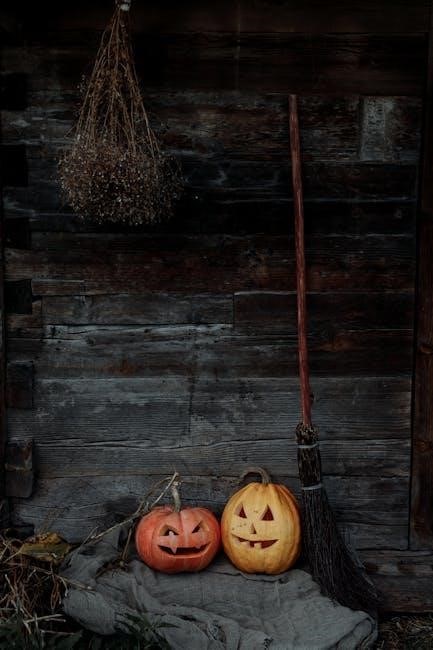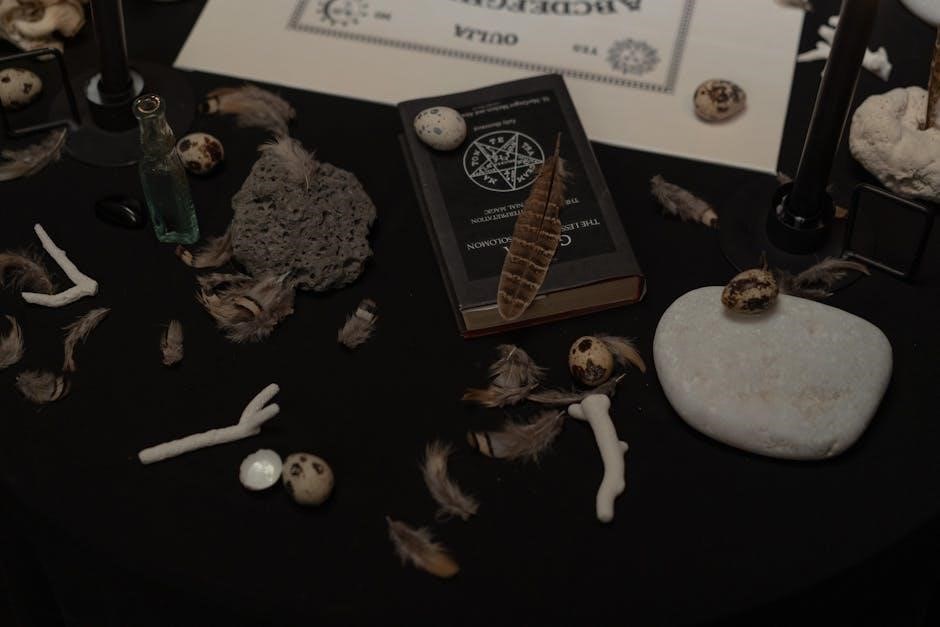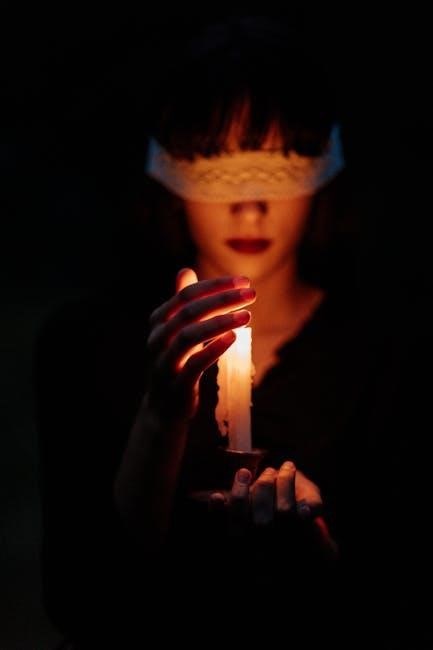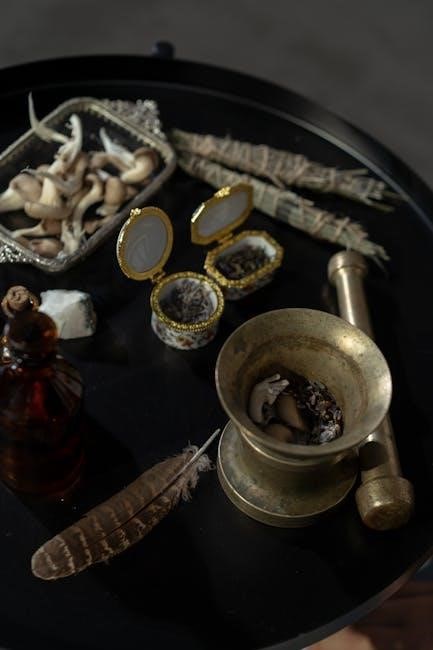How to Spot a Witch: A Comprehensive Guide
Discover the essential signs and traits to identify a witch, from historical methods to modern interpretations. This guide explores physical characteristics, behaviors, and cultural perceptions to help you understand witchcraft effectively.

Witchcraft has long fascinated and intimidated societies, leading to the development of various methods to identify witches. Historically, witch identification often relied on superstition, fear, and societal norms. Early methods included physical examinations for marks, such as warts or moles, believed to signify a witch’s connection to the devil. Behavioral traits, like living alone or owning a familiar animal, also raised suspicions. The infamous Malleus Maleficarum provided “guidance” for witch hunters, detailing supposed signs and interrogation techniques. Today, the perception of witches has evolved, blending folklore with modern interpretations in literature and popular culture. Learning to spot a witch involves understanding these historical and cultural contexts, as well as the psychological and social factors that fueled witchcraft fears. This guide explores the evolution of witch identification, from medieval trials to contemporary views, offering insights into the enduring mystery of witchcraft.
Historical Methods of Witch Identification
Historically, identifying witches often involved superstitious and brutal methods. One common practice was the “swimming test,” where suspects were bound and tossed into water. If they floated, they were deemed a witch; if they sank, they were considered innocent. Another method involved sprinkling holy water on the accused, as witches were believed to react adversely to it. Suspects were also examined for physical marks, such as warts or moles, thought to be signs of a witch’s pact with the devil. In some cases, individuals were tied with ropes, their thumbs and toes bound together, to test their endurance. These practices, often rooted in fear and paranoia, were widely accepted during the Salem Witch Trials and other witch-hunting eras. The Malleus Maleficarum further fueled these methods, providing “guidance” that led to countless convictions. These historical techniques reflect the darker side of human belief and societal fear.

The Role of the Malleus Maleficarum in Witch Hunting
The Malleus Maleficarum (“The Hammer of Witches”) was a pivotal text in the persecution of witches during the late medieval and early modern periods. Written by Heinrich Kramer and Jacob Sprenger in 1486, it systematized witch-hunting practices, providing “evidence” of witchcraft and methods for identification. The book claimed that witches were agents of the devil, capable of harming others through spells and curses. It emphasized the idea of a witch’s mark, a physical sign believed to signify a pact with Satan. The Malleus also outlined interrogation techniques, often involving torture, to extract confessions. Its influence spread widely across Europe and beyond, fueling witch trials and executions, particularly targeting women. The text became a justification for the brutal treatment of accused witches, solidifying its place as one of the most infamous documents in the history of witchcraft persecution.

Physical Signs of a Witch
Identify witches by the Devil’s mark, warts, moles, or unusual eye color. They may wear wigs to conceal baldness, a common belief in historical witch-hunting practices.
The Devil’s Mark and Its Significance
The Devil’s Mark was believed to be a physical sign of a witch’s allegiance to the devil, often appearing as a mole, scar, or unusual blemish on the body. During witch trials, such as those in Salem, suspects were thoroughly examined for these marks, which were thought to be insensitive to pain. This belief stemmed from the idea that witches were touched by the devil during their initiation into witchcraft. The Malleus Maleficarum, a key text used during the witch-hunting era, emphasized the importance of identifying such marks as evidence of witchcraft. The presence of the Devil’s Mark was often used as a primary piece of evidence to convict individuals, highlighting its central role in witch identification. This practice reflects the deep-seated fear and superstition surrounding witchcraft during historical periods, as society sought tangible signs to justify accusations.
Warts, Moles, and Other Physical Blemishes
During the Salem Witch Trials and other historical witch-hunting periods, warts, moles, and other physical blemishes were often cited as evidence of witchcraft. These marks were believed to signify a witch’s allegiance to the devil, making them a key focus during examinations. In many cases, such blemishes were thought to be insensitive to pain, further solidifying their association with witchcraft. The Malleus Maleficarum, a influential text used to identify witches, emphasized the importance of these physical signs. Individuals with unusual markings were often subjected to invasive inspections, and the presence of such blemishes could lead to accusations and convictions. This practice highlights the superficial nature of witch identification during these times, as society sought tangible, albeit unreliable, signs to justify their fears and suspicions of witchcraft.
Unusual Eye Color or Glowing Eyes
Unusual eye color or glowing eyes were often cited as signs of witchcraft in historical and cultural narratives. Bright, piercing, or glowing eyes were believed to signify a witch’s connection to supernatural forces or evil spirits. In some accounts, witches were described as having eyes that shimmered or glowed in the dark, which was interpreted as evidence of their magical powers. Additionally, eye colors that deviated from the norm, such as deep red or golden hues, were seen as unnatural and suspicious. These traits were often highlighted in witch-hunting manuals and folklore to help identify potential witches. The emphasis on eye color reflects the belief that witches could be recognized through physical traits that set them apart from the rest of society. Such descriptions continue to influence modern depictions of witches in literature and popular culture, adding to their enigmatic and mysterious image.
The Use of Wigs to Conceal Baldness
One common belief about witches was that they often wore wigs to hide their baldness, which was perceived as a sign of their supernatural or evil nature. According to historical accounts, witches were frequently depicted as old, bald women who used wigs to disguise their appearance and blend into society. This belief likely arose from the association of baldness with aging and the idea that witches were often older, marginalized women. The use of wigs also tied into the notion that witches sought to conceal their true identities, further fueling suspicion and fear. In some cases, during witch trials, accused women were shaved to check for signs of baldness or Devil’s marks, which were believed to be hidden beneath their hair or wigs. This practice highlights how physical appearance was deeply tied to accusations of witchcraft.

Behavioral Traits of Witches

Identify witches by their isolated lifestyles, ownership of animal companions, and avoidance of holy symbols. They often exhibit strange behaviors at night, fueling suspicions and fears within communities.
Living Alone or on the Fringes of Society
Witches were often identified by their isolated lifestyles, living on the outskirts of villages or in remote areas. This solitude fueled suspicions, as societal outcasts were frequently accused of witchcraft. Many suspected witches were elderly, poor women who lived alone, relying on their own resources for survival. Their independence and lack of close community ties made them easy targets for accusations. Historical records, such as those from the Salem Witch Trials, highlight how living alone or being a fringe member of society was seen as a sign of potential witchcraft. This isolation was often misconstrued as evidence of evil practices or communication with dark forces. The fear of the unknown and the desire to explain misfortunes led communities to label these individuals as witches. This section explores how social marginalization played a pivotal role in witch identification.
Ownership of a Familiar (Animal Companion)
Ownership of a familiar, often an unusual or exotic animal, was a key sign of witchcraft. Familiars were believed to be spirits in animal form, serving as companions and assistants to witches. Cats, dogs, birds, or even toads were common suspects, particularly if they exhibited strange behaviors or seemed unusually loyal. Historical records from witch trials frequently mention familiars as evidence of witchcraft. For example, a cat that stayed close to a woman or a bird that acted oddly could lead to accusations. The presence of such animals was seen as proof of a witch’s ability to communicate with supernatural forces. This belief was deeply rooted in folklore and fear, making pet ownership a dangerous trait for those accused. The idea of familiars remains a popular symbol of witchcraft in modern culture, reflecting the enduring legacy of these beliefs.
Strange or Unusual Behavior at Night
Strange or unusual behavior at night was often cited as a sign of witchcraft. People believed that witches were most active under the cover of darkness, engaging in rituals or casting spells. Historical accounts from witch trials describe suspects leaving their homes late at night, gathering in secluded areas, or exhibiting erratic behavior during evening hours. For instance, the use of a “witch’s cake” made from rye meal and urine was said to reveal witches when fed to children or animals. Additionally, any behavior deemed abnormal, such as muttering incantations, dancing alone, or showing an unusual interest in the moon, could raise suspicions. These nocturnal activities were seen as evidence of a connection to the supernatural, further solidifying the perception of witchcraft. Such beliefs were deeply rooted in fear and superstition, making nighttime behavior a key factor in witch identification.
Avoiding Holy Symbols or Water
Avoiding holy symbols or water was often seen as a sign of witchcraft. During historical witch trials, suspects who shunned religious symbols or refused to bless themselves were viewed with suspicion. Holy water, in particular, was believed to repel witches, as it was thought to purify and protect against evil. If a person avoided or reacted negatively to holy water, it was taken as evidence of their alleged witchcraft. This belief was supported by texts like the Malleus Maleficarum, which emphasized the use of holy symbols in identifying witches. Additionally, trials often involved tests where suspects were sprinkled with holy water or immersed in water to determine guilt. Those who avoided such practices or exhibited unusual behavior when near holy symbols were frequently accused. This fear of holy elements further solidified the notion that witches were inherently evil beings who could not tolerate sacred objects or rituals.

Rituals and Practices Associated with Witches
Witches were known for performing mysterious rituals, such as making witch cakes, casting spells, and conjuring spirits. These practices often involved magical tools and symbolic gestures, believed to harness dark powers. Binding suspects with ropes and testing them in water were common practices to identify witches; Historical texts like the Malleus Maleficarum detailed these rituals, shaping witch-hunting methods. The use of familiars and unusual nocturnal behaviors further fueled suspicions, as these were seen as signs of witchcraft. Rituals were often tied to fear and superstition, making them central to witch identification.
The Witch’s Cake: Ingredients and Purpose
The witch’s cake was a grim concoction used during witch trials to detect witches. Made from rye meal mixed with urine from the afflicted, it was baked and fed to the suspect. If the person experienced pain or discomfort, they were deemed guilty of witchcraft. This practice, rooted in superstition, was part of broader rituals to identify witches. The cake’s purpose was to reveal hidden guilt, as it was believed to cause physical reactions in those who had made a pact with the Devil. Such practices highlight the desperation and fear driving witch-hunting methods. The witch’s cake remains a chilling example of the lengths to which society went to root out perceived evil, blending folklore with brutal interrogation techniques.
Binding and Throwing Suspects into Water
One of the most notorious methods used to identify witches was binding and throwing suspects into water. This practice, known as “swimming” or “water ordeal,” was based on the belief that water would reject witches. The suspect’s thumbs and toes were tied together, and they were tossed into a pond or river. If they floated, it was taken as a sign of guilt, as witches were thought to be lighter due to their alleged pact with the Devil. If they sank, they were considered innocent but often drowned in the process. This brutal method was widely used during witch hunts, reflecting the societal fear and superstition of the time. It was a cruel and arbitrary test, often leading to the condemnation of many innocent people accused of witchcraft.
Weighting Against Objects as a Test
Weighting suspects against objects was another method used to identify witches, rooted in superstition and fear. This practice involved placing the accused on one side of a balance scale and everyday objects, such as Bibles or stones, on the other. If the suspect’s side weighed more, they were deemed innocent; if lighter, they were declared a witch. This arbitrary test was often manipulated to yield the desired outcome, as the weighers could influence the results. The belief was that witches were lighter due to their supposed lack of a soul or their connection to the Devil. This method, like others, relied on unfounded beliefs and led to the wrongful condemnation of many. It highlights the desperation and irrationality of witch-hunting practices during historical periods of mass hysteria and fear.
Interrogation Techniques Used on Suspects
Interrogation played a central role in identifying witches, often involving intense psychological manipulation and physical coercion. Suspects were subjected to relentless questioning, with examiners using leading questions to extract “confessions.” Torture was frequently employed to force admissions of guilt, despite legal prohibitions in many regions. Authorities believed that witches would reveal their pact with the Devil under sufficient duress. The Malleus Maleficarum, a key witch-hunting manual, provided detailed guidance on interrogation methods, emphasizing the necessity of breaking the suspect’s will. Sleep deprivation, threats, and false promises of leniency were common tactics. The goal was not to uncover truth but to confirm preconceived notions of guilt. These techniques, often conducted in secret, further fueled the climate of fear and mistrust, leading to widespread false confessions and the execution of innocent individuals.

Modern Interpretations of Witchcraft
Modern interpretations of witchcraft emphasize its cultural and psychological significance, often linking it to folklore, literature, and media. Witches are frequently portrayed as mysterious figures in popular culture, blending fear and fascination. Today, the concept of witchcraft is explored in various contexts, from psychological analyses to its representation in films and books, reflecting evolving societal perceptions of magic and the unknown.
Folklore and Cultural Significance of Witches
Witches have long been a cornerstone of folklore and cultural narratives, symbolizing both fear and fascination. In many traditions, witches are depicted as mysterious figures with supernatural powers, often associated with broomsticks, cauldrons, and magical incantations. Folklore frequently portrays witches as older, isolated women living on the fringes of society, embodying societal fears of the unknown. Cultural significance is evident in literature, films, and art, where witches are often used to explore themes of power, morality, and transformation. The witch’s familiar, such as a cat or toad, is a recurring symbol, representing their connection to the spiritual or demonic. These cultural depictions have evolved over time, blending historical beliefs with modern interpretations, making witches a timeless and universal figure in human storytelling.
The Psychological Aspect of Fear and Suspicion
Fear and suspicion have historically fueled the identification and persecution of witches, often rooted in psychological and societal anxieties. The Malleus Maleficarum, a key text in witch hunting, exploited these fears, portraying witches as agents of evil. During the Salem Witch Trials, mass hysteria and paranoia led to accusations based on minimal evidence, highlighting how fear could spiral out of control. The psychological need to identify enemies within society often targeted marginalized groups, such as elderly women living alone. These accusations served as a way to explain misfortunes and consolidate communal fear. The mindset of suspicion created an atmosphere where unusual behavior or physical traits were interpreted as signs of witchcraft. This psychological dynamic continues to influence perceptions of witches, blending historical prejudices with modern-day misunderstandings of the unknown.
Witches in Literature and Popular Culture
Witches have captivated audiences in literature and popular culture, shaping perceptions of witchcraft through vivid portrayals. Roald Dahl’s The Witches and its adaptations have immortalized the image of sinister, child-hating witches, while other works, like Harry Potter, present them as complex characters. Historical texts, such as the Malleus Maleficarum, are often referenced in modern media to highlight the brutality of witch hunts. Films like The VVitch and Hagazussa explore the psychological and societal fears surrounding witchcraft. Modern guides, including How to Spot a Witch PDFs, blend folklore with humor, offering quirky tips to identify witches in everyday life. These depictions reflect evolving attitudes toward witchcraft, blending fear, fascination, and humor. Literature and media continue to influence how witches are perceived, making them enduring figures in cultural imagination.

How to Protect Yourself from Witches
Use holy water, religious symbols, and protective rituals to safeguard against witches. Avoid suspicious individuals and practices, and seek community support to prevent witchcraft’s influence in your life.
The Use of Holy Water and Religious Symbols
Holy water and religious symbols were often used to protect against witches and detect their presence. Sprinkling holy water on a suspect was believed to cause pain or discomfort if they were a witch. Religious symbols, such as crosses or holy medals, were carried as protective charms to ward off evil influences. These practices, rooted in historical witch-hunting techniques, were thought to repel witches or expose them through their reactions. The use of such symbols emphasized the belief in divine protection and the power of faith to counteract witchcraft. These methods were widely recommended in guides like the Malleus Maleficarum and remained popular in communities fearful of witchcraft. By carrying or displaying these symbols, individuals sought to safeguard themselves from perceived threats, reflecting the deep-rooted superstition of the time.
Avoiding Suspicious Individuals or Practices
Avoiding individuals or practices deemed suspicious was crucial in identifying witches. People were advised to steer clear of those who lived alone, displayed unusual behavior, or owned animal companions like cats or toads, often seen as familiars. Suspicious practices included gathering herbs at night, exhibiting strange rituals, or avoiding holy symbols. Communities encouraged vigilance, urging members to report anyone engaging in such activities. This cautious approach was believed to prevent witchcraft from spreading and protect the innocent. Historical guides emphasized the importance of avoiding contact with suspected witches to safeguard oneself from potential harm. By distancing themselves from such individuals and practices, people hoped to create a barrier against perceived evil influences. This avoidance reflected the widespread fear and superstition surrounding witchcraft during historical witch-hunting periods.
Social and Community Measures to Prevent Witchcraft
Social and community measures played a significant role in preventing witchcraft, as fear of witches drove collective action. Communities often held public trials and executions to deter suspected witches, believing this would cleanse society of evil. Public shaming and ostracism were also used to isolate individuals deemed suspicious. Religious leaders emphasized the importance of prayer and the use of holy water to protect against witchcraft. Communities encouraged vigilance, urging members to report strange behavior or practices. Education about witchcraft signs helped individuals identify potential threats. These measures fostered a sense of unity against a perceived common enemy but often led to unjust accusations and suffering. The collective fear of witchcraft reinforced strict social norms, ensuring conformity and reducing perceived risks. These practices highlight the historical interplay between fear, community action, and the pursuit of safety from perceived evil.
The perception of witchcraft has evolved significantly over time, shifting from fear and persecution to a more nuanced understanding of cultural and historical contexts. Witchcraft, once a source of widespread terror, is now often viewed through the lens of folklore, psychology, and modern spirituality. The lessons learned from past witch hunts remind us of the dangers of unchecked fear and the importance of critical thinking. By examining historical methods and contemporary interpretations, we gain insight into the complexities of human belief and behavior. This comprehensive guide encourages a balanced approach to understanding witches and their place in both history and modern society.
Final Thoughts on Witch Identification

Identifying a witch historically relied on a mix of superstition, fear, and flawed methods, such as the “witch’s mark” or water tests. These practices, rooted in misconceptions, often targeted vulnerable individuals like elderly women living on the fringes of society. The Malleus Maleficarum and other texts fueled these beliefs, leading to widespread persecution. Modern interpretations recognize the psychological and cultural factors behind witchcraft accusations, emphasizing the dangers of mass hysteria and unfounded suspicion. While folklore and literature continue to romanticize witches, understanding the historical context is crucial for fostering empathy and critical thinking. By examining past errors, we can avoid repeating them, fostering a more inclusive and informed society. The journey from fear to understanding highlights humanity’s capacity for growth and the importance of questioning long-held beliefs.
The Evolution of Witchcraft Perceptions Over Time
Perceptions of witchcraft have undergone significant transformation over centuries, shaped by cultural, religious, and social influences. In the Middle Ages, witches were feared as agents of the Devil, leading to brutal witch hunts and executions. The Malleus Maleficarum became a key text, legitimizing witch-hunting practices like water tests and the search for the Devil’s mark. During the Salem Witch Trials, hysteria and fear drove the persecution of marginalized individuals, particularly women. In modern times, witchcraft is often romanticized in literature and popular culture, with witches portrayed as powerful, mysterious figures. Folklore and media have reimagined witches, shifting their image from evil beings to symbols of empowerment. This evolution reflects changing societal values, from fear and superstition to a more nuanced understanding of witchcraft as a cultural and spiritual practice. The journey from persecution to fascination highlights humanity’s ability to reinterpret and redefine beliefs over time.